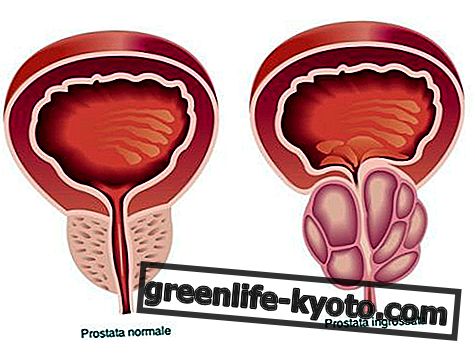Iridology is a holistic discipline that allows us to get to know ourselves and the state of health of our organism through the study of the eyes . Let's find out better.

What is iridology
Iridology, born at the end of the 19th century thanks to the Hungarian Ignatz von Peczely and developed in the twentieth century in the first place by Bernard Jensen, is a holistic discipline that is based on the assumption that the iris, the colored part of the eye, represents a map that reproduces the entire human body, its anatomy, its state of health and, above all, its functions; its origins are very ancient: Chinese, Egyptians, Chaldeans, Essenes, Jews and Greeks, in fact they obtained diagnostic information from eye observation.
Iridological analysis is undoubtedly one of the most widely used survey techniques by naturopaths today.
Iridology guides the expert who knows how to practice discovering the degree and health conditions of the whole subject, starting from the physical framework but also psycho-emotional, by reading the iris of the eye. The eye is therefore considered a very important means to observe from the outside what happens inside the human body.
The iris signs, according to this perspective, are able to indicate both the predispositions to develop certain pathologies to which the subject can tend, and to see the consequence of traumas suffered or even had in the past. Another strong point is that of being able to identify the causes related to the imbalances and the energy-functional problems that the subject presents. Iridology is therefore a useful means of investigation to work in prevention before the "disease" is established.
The person who studies the iris is called iridologist or iridol naturopath and is able to make an assessment of certain problems and to best advise natural remedies and dictates for a lifestyle that brings him back into balance and therefore healthy.
Through iridology there is no diagnosis, since it is not a diagnosticha technique, which is instead proper to the doctor, but health findings are made, considering the current processes in place, be they organic and emotional, inflammatory and congestive states that can exist but also the state of organic poisoning and of which organ or apparatus is found. It then investigates the alterations of the humors (blood and lymph) as well as on the imbalances of the nervous system .
How does it work?
Looking at the iris map, the various modifications and alterations of the fibers of the iris, whether they are chromatic or not, but also evaluating the age of the subject, the facial features of his face, his hands and his nails, are here it can have a clear and complete picture on the health condition of the organism.
The iridological investigation, that is the study of the iris signs and the iris setores in which they are localized, allows us to outline a complete picture of the subject examined starting from his energy quid, that is from the index of vitality, mood, immune defenses, personality, overloads and deficiencies, ability to eliminate metabolic residues and toxins, stress level, susceptibility to aging, weaknesses of organs and systems, degree of mineralization, organism recovery potential and the overall level of health and more.
For example, through iridology, the main psycho-emotional traits can be highlighted, so much so that there is even a distinct branch represented by psychosomatic iridology. It is important to take into account that the results of the reading of the iris must always be interpreted with common sense, comparing them and integrating them with what emerged during the interview.
The iridological investigation is neither invasive nor painful and is carried out using a special non-electro-medical instrument, the iridoscope, which, equipped with special optics, allows the iris to be examined in its most microscopic details. In the world there are not two people who have the same irises, indeed, the irises are different even in the same individual: colors, pigmentations, streaks, reliefs, fissures, rings and other signs characterize them and make them unique.
What are iridological constitutions?
What does iridology cure?
Iridology is a preventative factor, rather than an element of a posteriori care. Through a careful and accurate examination of the eye, one can deepen one's self-knowledge and understand which are physical indications, alarm bells, which the organism also sends through the coloring of the eye.
In essence, the observation of the iris is able to establish the general health of the subject, his predisposition to diseases, his weakness or physical strength, the resistance to stress, the response to disease and the capacity for physical and mental recovery, if these arise.
With iridology you can opt for a preventive strategy, thanks to which the individual becomes aware of the potential difficulties and thus take preventive countermeasures to avoid problems .
The iridologist through the investigation of the eye will help the patient along this path, choosing the most suitable advice for his person and not only relative to the illness or symptom that presents
For whom is iridology useful?
It is estimated that the genotypic, phenotypic, organic and functional iris signs are around 1600, each eye mapping is unique and unrepeatable : perhaps one day the iris will be used as identification for each subject being ten times safer than fingerprints .
It is also true that the iris changes and changes its structure depending on the lifestyle of the person, the diet, the drugs they use, the environment in which they live, so, from the perspective of a vision holistic, the iridologist will evaluate not only the reading of the iris, which will give him considerable suggestions, but also the entire physical person and not the various factors that have guided his life.
Iridology is generally indicated for every person who wants to go deeper into self-knowledge and health, understand momentary imbalances and individual predispositions. The aim is to act preventively, trying to anticipate the healthier lifestyle that allows the person to avoid the development of a certain pathology.
Far from being a divinatory art, iridology bases its principle on the fact that every sector of the iris corresponds to an organ of the human body. It is known, for example, that severe liver disorders turn the conjunctiva to yellow or that the pupil dilates or shrinks in those who use drugs. Likewise the presence of spots or pigmentation or other signs manifest ongoing illnesses.
The iridology and the work of the iridologist
The law in Italy and abroad
In Italy, iridology has spread by various researchers; many of them have trained in German schools but others have brought new and new fields of application to this technique. The way of understanding iridology in Italy is considered quite complete. In France, in England, in the United States it is equally recognized and practiced.
In the Peninsula the iridological analysis often merges with other branches of knowledge, such as psychological analysis and physical investigation, with the aim of applying different healing techniques to the patient, ie acting from a nutritional, phytotherapeutic, homeopathic and psychological point of view, emotional, in short, holistic.
Many criticisms have been made of iridology and its diagnostic techniques; many classify it as a pseudo-science or as a diagnosis of little value. Recent studies carried out in Europe and the United States are reconfirming Iridology as a diagnostic and preventive science even for the general practitioner : in fact, in the techniques of control, verification, identification of a person, the reading of the iris is increasingly used as a tool for great completeness.
Associations and reference bodies
In Italy there are associations such as ASSIRI (Italian Iridological Association), which, in addition to offering a list of iridologists, presents courses and updates on the subject; there is also the iridology course of the University of Urbino, with the applied iridology course; finally it is worthwhile to mention a site that presents all the literature on the subject is Iriddologyst.org.













